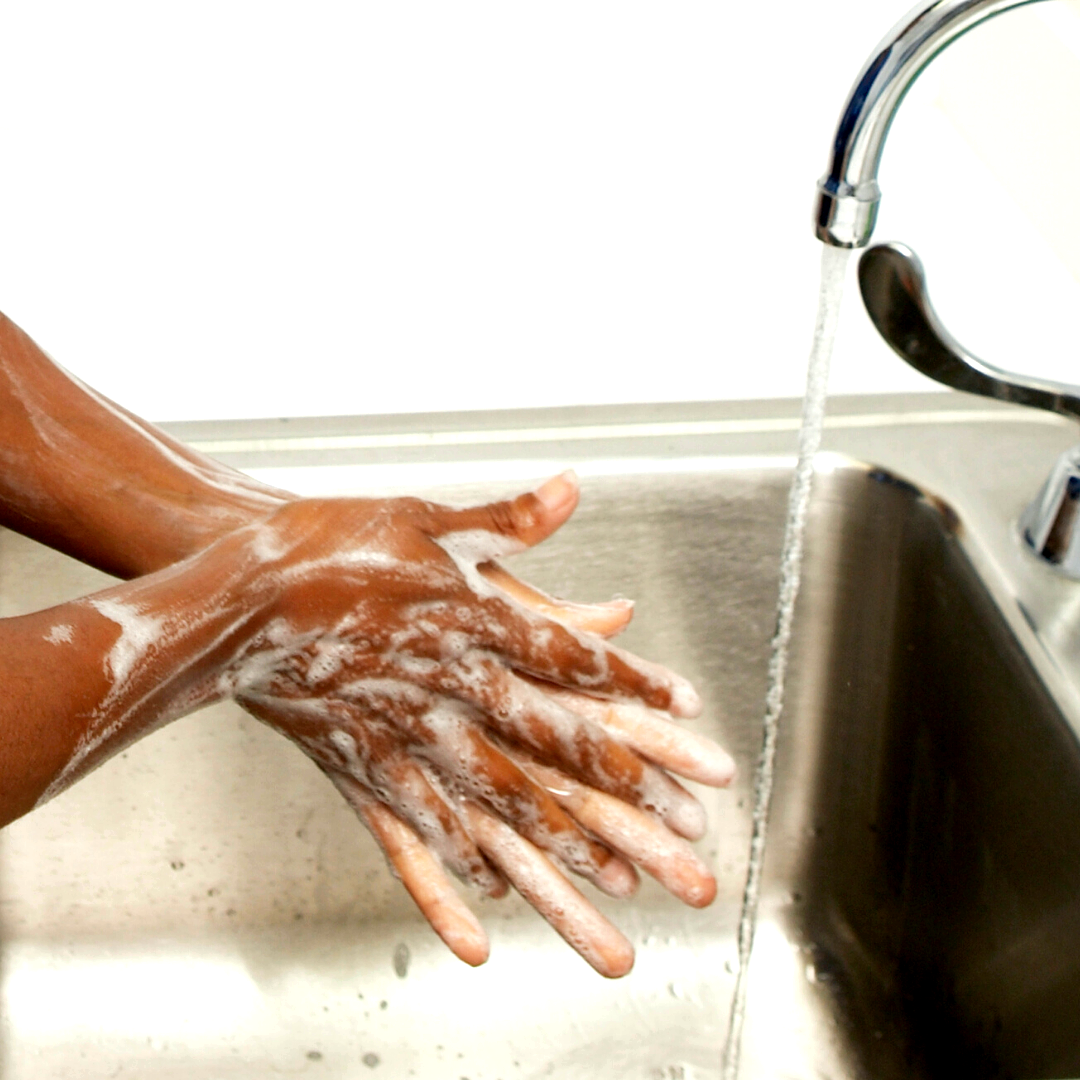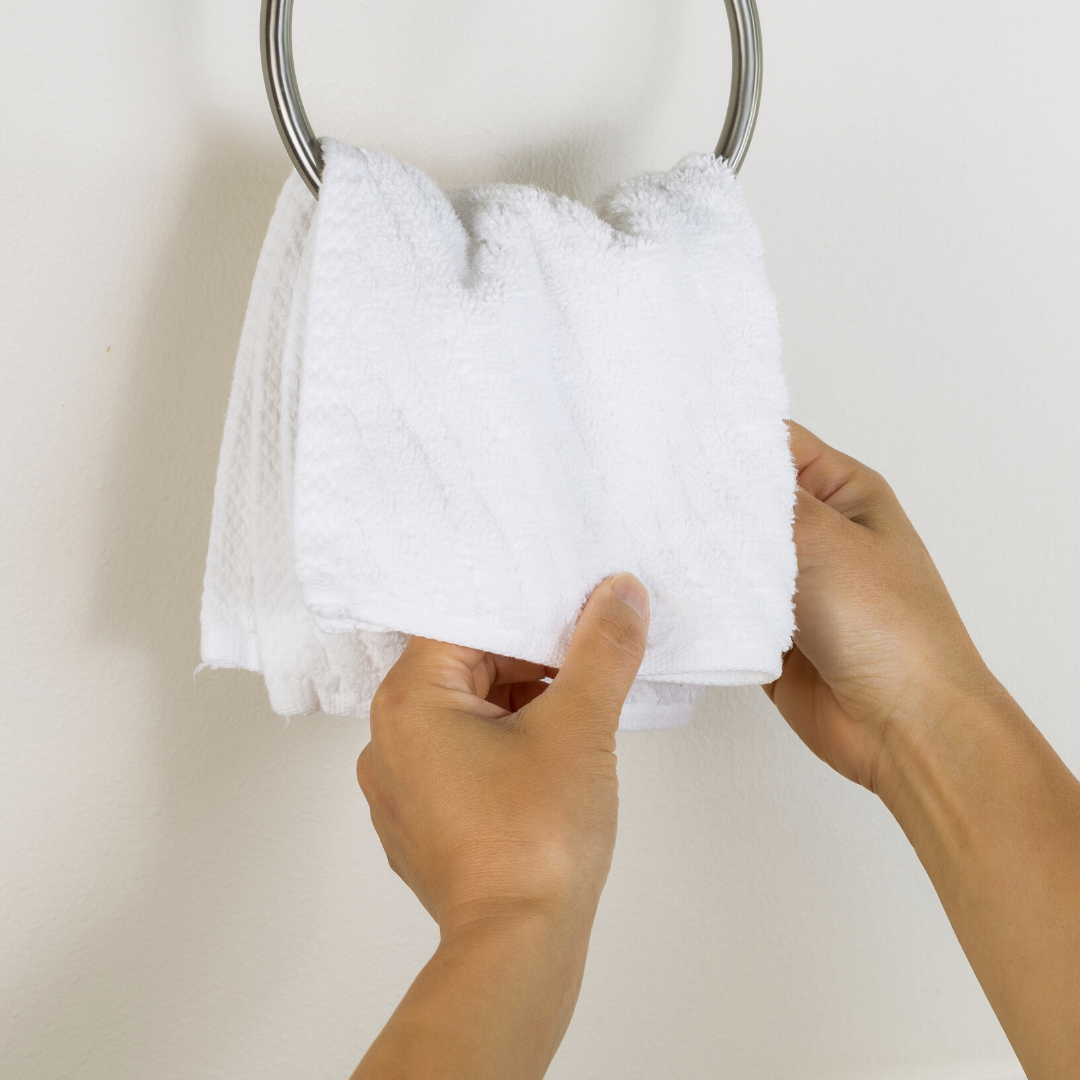How and When to Wash Your Hands (The Right Way)

Though washing your hands should be pretty self-explanatory, there are still many among us who may need a refresher on the specifics of how to wash your hands the right way. With active flu season, and the ominous coronavirus COVID-19 continuing to spread, medical professionals advise being vigilant about handwashing right now, as (aside from self-quarantining) frequently washing hands with regular soap and water is still one of the best ways to protect yourself and your family from getting sick.
We've put together a comprehensive guide below on how and when to wash your hands, and what to wash them with, in order to give you the best defense against germs, using direction from the Centers of Disease Control and Prevention (CDC).
HOW TO WASH YOUR HANDS
1. Wet your hands and apply soap.
Get your hands wet with clean, running water (the warmer the better), and turn off the tap as to not waste water unnecessarily. Apply a healthy amount of soap. We recommend choosing a non-toxic formula that is free of sulfates, parabens, synthetic fragrance, and triclosan (which used to be commonly used in antibacterial soaps) when possible. See our note about antibacterial soaps at the bottom of this guide.

2. Lather up.
Lather your hands until they are nice and sudsy, by rubbing them together with the soap and water. Make sure to lather the backs of your hands, between your fingers, and under your nails as well.

3. Scrub for at least 20 seconds.
The expert rule of thumb is to scrub your hands for at least 20 seconds. Though it's probably not realistic to actually set a timer each time, a common tip is to get used to humming the “Happy Birthday” song from beginning to end twice, which should equal approximately 20 seconds. Or you can always count to 20 using this trick, "One-FORK & MELON, two-FORK & MELON, three-FORK & MELON..."

4. Rinse.
After you've lathered and scrubbed, rinse your hands well under clean, running water - making sure to rinse away all soap and any other debris along with it.

5. Dry.
Dry your hands thoroughly using a clean towel, or you can air dry them with a dryer or by shaking vigorously.

WHEN TO WASH YOUR HANDS
Wash your hands often! Frequent handwashing with regular soap and water is one of the very best defenses against the spread of germs.
The CDC recommends washing your hands often to stay healthy, especially during times when you are more likely to get and spread germs. Per CDC guidance, this includes all of the times below:
- Before, during, and after preparing food.
- Before eating food.
- Before and after caring for someone who is sick.
- Before and after treating a cut or wound.
- After using the toilet.
- After changing diapers or cleaning up a child who has used the toilet.
- After blowing your nose, coughing, or sneezing.
- After touching an animal, animal feed, or animal waste.
- After handling pet food or pet treats.
- After touching garbage.

NOTES ABOUT ANTIBACTERIAL HAND SOAP & HAND SANITIZER
1. Ditch the antibacterial hand soap.
Antibacterial soaps (also called antimicrobial or antiseptic soaps) contain certain chemicals not found in regular soaps, and in recent years the U.S. Food and Drug Administration (FDA) has cautioned against the use of them, and banned the use of triclosan as an ingredient, which was once ubiquitous in antibacterial hand soaps. According to the FDA, the benefits of using antibacterial hand soap haven’t been proven to be more effective than regular hand soap at getting rid of germs. Additionally they say, "the wide use of these products over a long time has raised the question of potential negative effects on your health." Triclosan specifically has been linked to the creation of antibiotic-resistant bacteria, disruption of human hormones, and skin cancer concerns. So what should you do? Wash your hands with plain soap and water.
2. Use hand sanitizer when washing isn't an option.
To get rid of germs, washing your hands with soap and water is best. But if you don't have access to soap and water, an alcohol-based hand sanitizer is your next best line of defense. Make sure to use hand sanitizer that contains at least 60% alcohol. You can check out the CDC's recommendations for what to look for in hand sanitizer and how to use it properly here.
FINAL NOTE
Getting into good healthy habits when washing your hands is more than worth the extra bit of effort, if it will help to ward off illnesses. This is important all the time, but especially important during high risk periods like winter flu season, and particularly right now when we're all worried about the coronavirus outbreak. Please stay safe and don't hesitate to reach out to us for any reason🖤
*These statements have not been evaluated by the Food and Drug Administration. Our products are not intended to diagnose, treat, cure, or prevent any disease.
